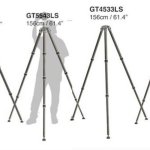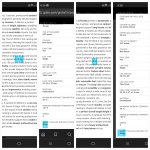Hello. Please share your thoughts.
First question: would this tripod height be enough for a large angled scope if I'm almost 190 cm/74.8" tall?

Second question:
Which tripod is more stable and sturdy?
GT5543LS - 4 sections(29, 32.9, 37, 41.3 mm/1.14- 1.3- 1.46- 1.63 in)
"With a top leg diameter of 41.3 mm, the long, 4-section GT5543LS is both sturdier and compact (its top casting is shared with Series 3 models)"
or
GT4533LS - 3 sections(29, 32.9, 37 mm/1.14- 1.3- 1.46 in)
"With a top leg diameter of 37 mm, this tripod is both sturdier and compact (its top casting is shared with Series 3 models)"
And how can they both share the same top casting if top leg diameter is different? And Series 3 tripods has top leg diameter only 32.9mm/1.3in.
Thank you
First question: would this tripod height be enough for a large angled scope if I'm almost 190 cm/74.8" tall?

Second question:
Which tripod is more stable and sturdy?
GT5543LS - 4 sections(29, 32.9, 37, 41.3 mm/1.14- 1.3- 1.46- 1.63 in)
"With a top leg diameter of 41.3 mm, the long, 4-section GT5543LS is both sturdier and compact (its top casting is shared with Series 3 models)"
or
GT4533LS - 3 sections(29, 32.9, 37 mm/1.14- 1.3- 1.46 in)
"With a top leg diameter of 37 mm, this tripod is both sturdier and compact (its top casting is shared with Series 3 models)"
And how can they both share the same top casting if top leg diameter is different? And Series 3 tripods has top leg diameter only 32.9mm/1.3in.
Thank you








